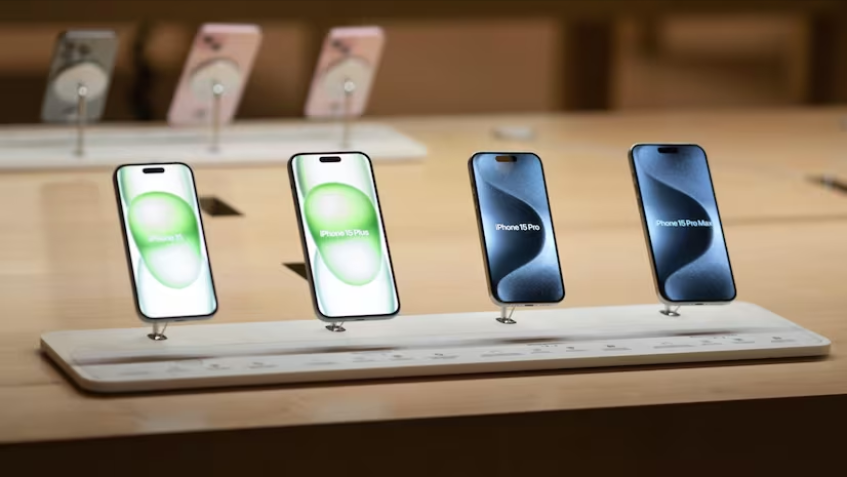How to Become a UX Designer: Step-By-Step Guide
A user experience (UX) designer can expect to make between $95,000 and $150,000 a year, with a 10-year growth rate of 22.1%, making them one of the top 50 careers, according to CNNMoney and PayScale.com.
Experience with UX design, graphic design, market research, and psychology are among the prerequisites for becoming a UX designer. The abilities required to become a UX designer can be acquired by anyone in a relevant profession, even though many UX designers begin their careers in web design or development.
We’ll go through the steps of becoming a UX designer without any prior experience, how long it takes, and what credentials you need to get employed in this article. To go directly to that section, click any of the links there, or continue reading.
How to Become a UX Designer with No Experience
- Take a UX design course.
- Create some designs independently.
- Get some hands-on experience.
- Create a portfolio.
- Network.
- Apply to UX designer jobs.
- Keep learning.
For a brief summary of the essential actions that anyone with no prior expertise may follow to become a UX designer, watch this video, or continue reading:
1. Take a UX design course.
More than 140 bachelor’s and master’s degrees in user experience are offered by colleges worldwide. These degrees are in UX-related disciplines, such as digital design, information architecture, and interaction design. Most require two to four years to finish.
A UX design training can be of interest to you if you’re searching for a quicker, more adaptable solution. Numerous provide certificates that might make your CV stand out.
For instance, Google provides a UX Design Professional Certificate online course. After finishing it, which should take about six months, you can apply to work as a UX designer for more than 150 American companies, such as Google, Walmart, and Best Buy.
2. Create some designs independently.
In most UX design courses and bootcamps, you will finish one project at least. To gain as much expertise as you can with various tools and design kinds, you should keep creating designs outside of the course or bootcamp.
Once the designs are to your satisfaction, think about submitting them to websites such as Behance and Dribble to gain some exposure and comments. This might be a fantastic approach to begin expanding your network within the UX design community and developing your portfolio.
Here are a few Behance samples of UX designer Emi Lantz’s work:
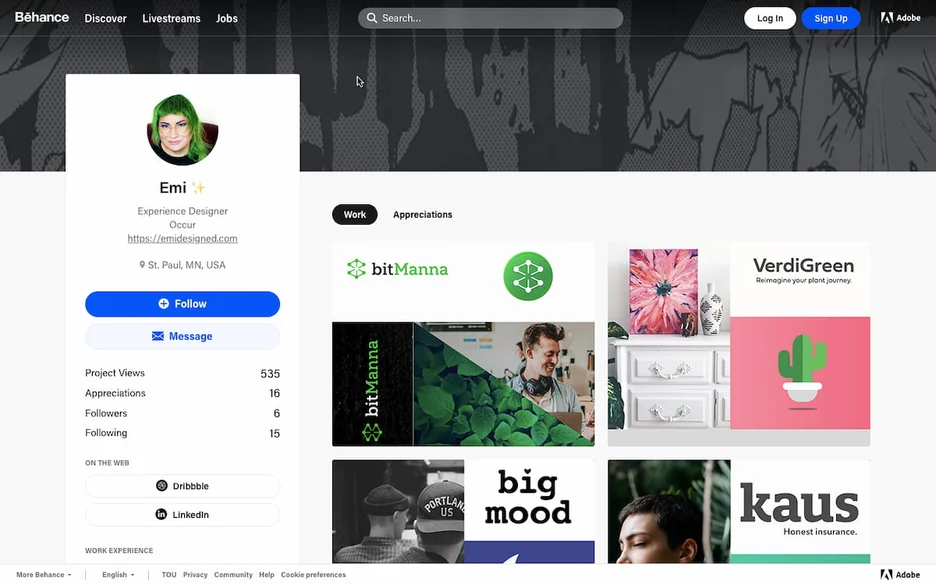
3. Get some hands-on experience.
Think about doing freelance work or an internship in design to really put your talents to the test. This is a fantastic opportunity to expand your network and add experience to your résumé.
More significantly, it will support you in laying a strong basis for cooperation, communication, and project management abilities. These soft talents are equally crucial to a UX designer’s job as their technical counterparts.
Sites like LinkedIn and Upwork are good places to look for freelance or internship opportunities. There are now over 850 freelance positions for UX designers on Upwork:
4. Create a portfolio.
After completing the aforementioned processes, you can compile your best work into a portfolio.
Gassia Maljian, the Executive Search Director at Creative Niche, highlighted the value of portfolios in a piece for UsabilityGeek, saying, “They show all the work a designer has completed and they support all of the experience listed on a resume.” It’s crucial to make sure your portfolio has a range of samples with as much process documentation as you can.
Included in your portfolio should be demo work as well as projects you worked on as an intern or freelancer for clients or a business. This is crucial for showcasing both your influence and your abilities and workflow for enhancing the user experience. If you have testimonials, please include them with your work in addition to the outcomes of your efforts.
On her portfolio website, Emi Lantz, for instance, has a slider of endorsements that speak to her skill, diligence, and influence:
5. Network.
Finding mentors and employment prospects are two main benefits of networking.
Inquiring with more seasoned designers who have worked in the area for a longer period of time might offer insightful advice on how to succeed as a UX designer. You can discover the most effective learning resources, upcoming trends, and more. If you establish a deep connection with them, they might even tell you about employment openings at their organisations and provide you with referrals.
Try joining a design community like Design Buddies on Discord or User Experience Design on LinkedIn to locate designers with the knowledge and experience you’re looking for.
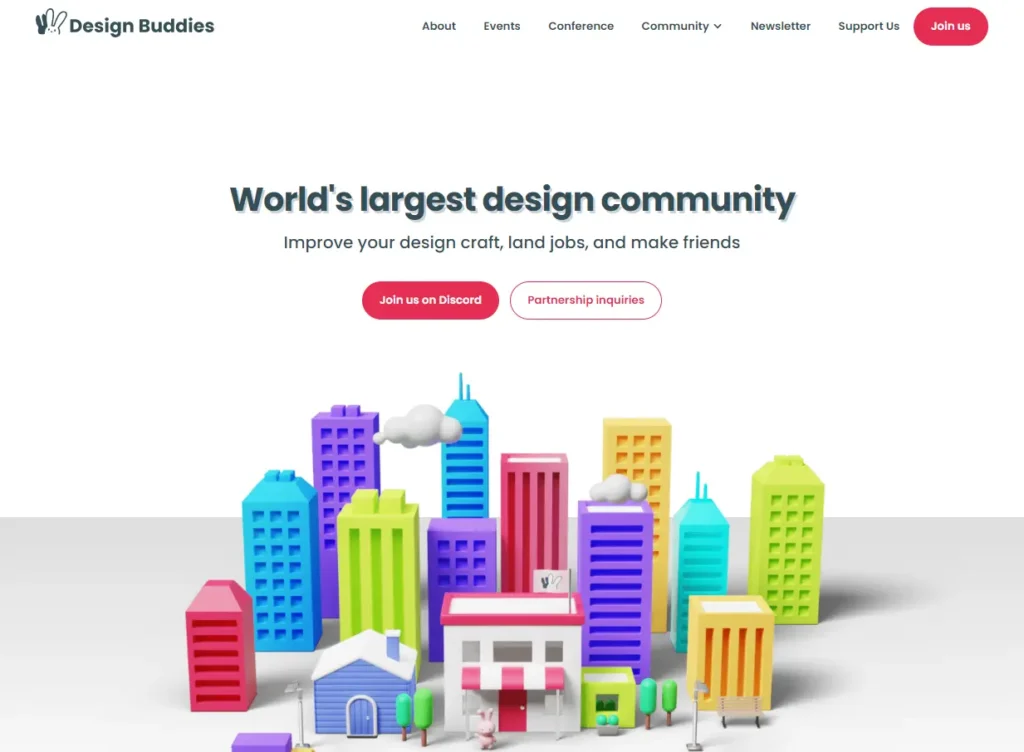
6. Apply to UX designer jobs.
Now that you have your degree, experience, and portfolio, you can begin applying to employment. There are thousands or perhaps hundreds of job advertisements for UX designers on Indeed, Glassdoor, and LinkedIn. For instance, Indeed currently has around 14,000 positions for UX designers.
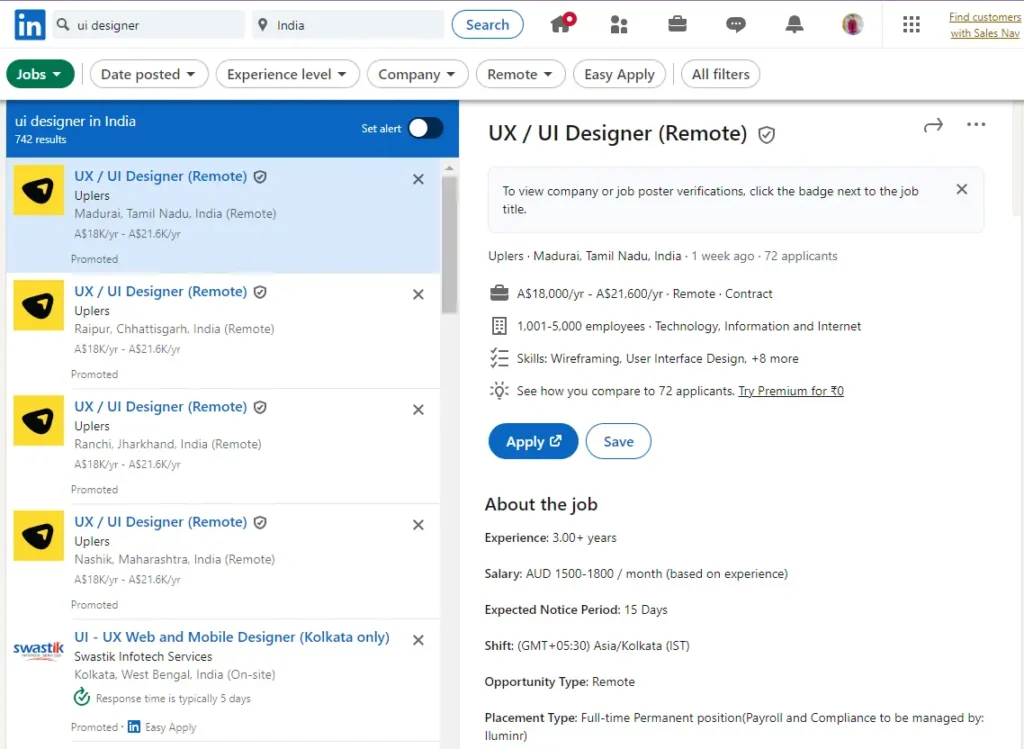
Many titles in the UX design sector focus on certain skill sets, such as usability, content strategy, or coding. When searching for a job, keep an eye out for any of the following titles, but be sure to read the descriptions and requirements to see if they fit your interests and skill set:
- UX DesignerExperience
- DesignerVisual
- DesignerUX
- WriterUX
- ArchitectInformation
- ArchitectUX
- ResearcherUX
- EngineerInteraction Designer
7. Keep learning.
It’s critical to continue studying in order to advance your career as a UX designer, develop new kinds of design solutions, and keep up with emerging trends and technologies. You have two options for doing this: either keep taking design classes or work on your own by reading and making designs for your portfolio website. Seek out classes that focus on a certain topic or area of your field that you are not very familiar with, such as journey mapping.
The following courses could be helpful to UX designers with various degrees of experience:
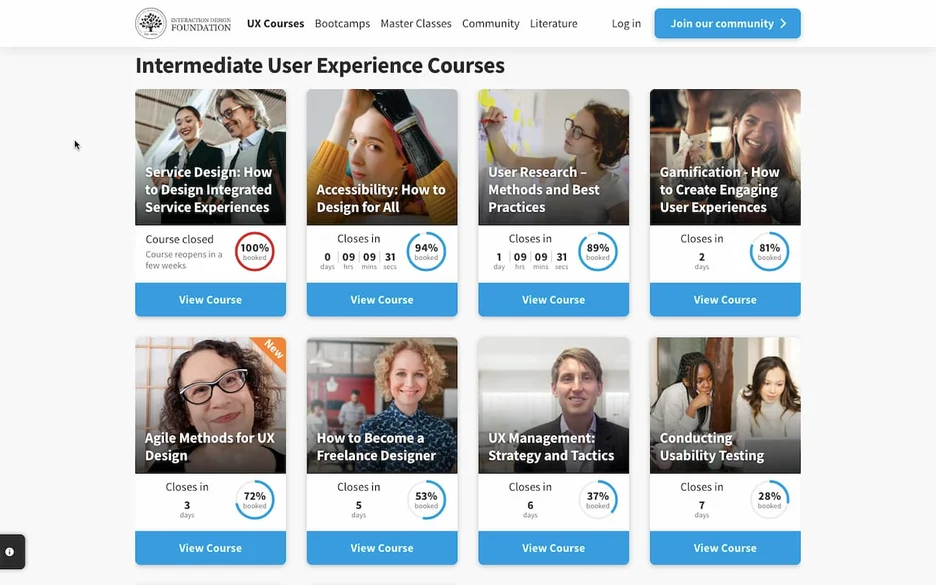
After going over each stage involved in becoming a UX designer, let’s talk about how long the process will take.
How long does it take to become a UX designer?
Becoming a UX designer can take as short as three months, but it usually takes two to six years.
The timeline can vary greatly because there are no official qualifications for becoming a UX designer, such as a certain degree, certification, or licence. But as was previously mentioned, there are things you can do to increase your chances of getting hired as a UX designer.The following is a range of estimated times for finishing each phase in the process of becoming a UX designer:
Degree in UX-related field: 2 – 6 years
It will take two to four years, depending on whether you want to pursue an associate’s or bachelor’s degree in computer science or a similar profession. Two more years will be needed for a master’s degree.
“UX-related degrees include:
Computer science
Graphic design
Game design
Information technology
Web design
Marketing
Psychology
A bachelor’s degree is the most common, with 71% of UX designers holding one, according to data from Zippia. 7% hold an associate’s degree, while 17% hold a master’s.
A bachelor’s degree is not necessary, though. A bachelor’s degree in design, computer science, psychology, human-computer interface (HCI), or a similar discipline is typically included as a prerequisite on job ads, as is “equivalent professional experience.” This emphasises that there is no one right path for preparing for a job in UX design, even though some undergraduate degrees can be helpful. Certain UX designers will possess equivalent experience, or a blend of education and experience.
UX Course: 6 hours – 10 months
Another approach to understand the principles and techniques of UX design is through UX classes. These can more readily fit into your schedule than a formal degree because they are frequently given online and at your own pace. Course lengths for UX also vary greatly. While some can be finished in a few hours, others take months.Here are a few courses along with an estimated time of completion:
- Introduction to User Experience Design by Georgia Tech: 6 hours
- User Experience: The Beginner’s Guide by Interaction Design Foundation: 7 weeks
- Beginner UX Design Course by UX Academy: 2 months
- UX Design Immersive Online by General Assembly: 3 months
- Google UX Design Professional Certificate: 6 months
- UX Design Program by Career Foundry: 10 months
UX Internship or Freelance Job: 1 – 6 months
Internships in UX usually run 10 weeks. A lot of these happen in the summer. More commonly, freelance work might last anywhere from one to six months, depending on the project and the firm.An example of a posting for a UX design intern is this one:
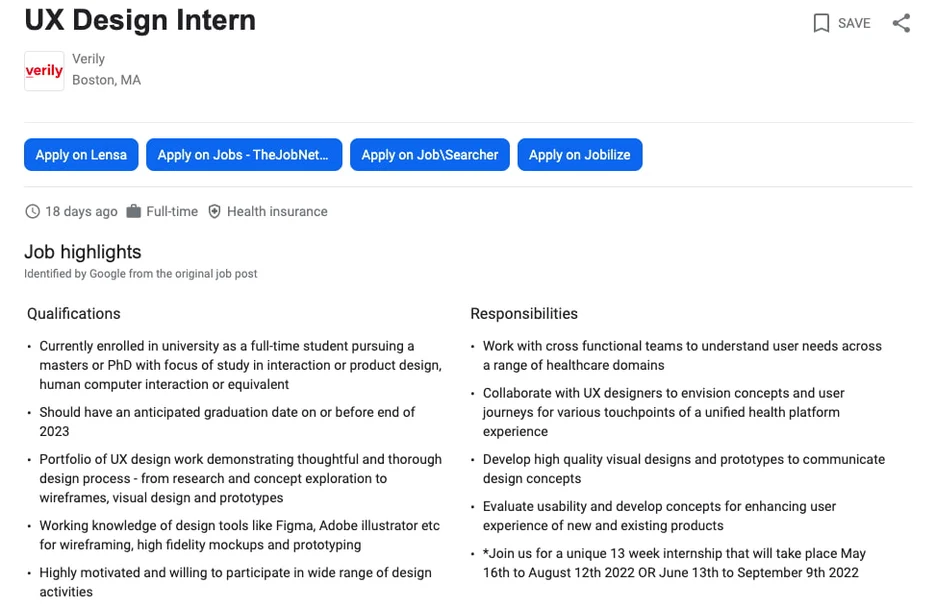
Looking at these time ranges may be disheartening if you’re looking to switch career paths, but again there are no formal requirements for becoming a UX designer so every path is unique. In the video below, for example, Senior Product Designer Rachel walks through how she became a UX Designer in three months with no degree or experience:
UX Designer Qualifications
Experience in UX design, UX software, prototyping, user research, and testing, as well as a proven grasp of front-end technologies, user-centered design, mobile-first, and responsive design, are among the credentials for UX designers. It is anticipated that you have an online portfolio or samples of your interaction and visual design work.
Although the aforementioned skills are frequently seen in job advertisements for UX designers, each posting will be specific to the organisation, the role, the seniority level, and the salary range. This is an illustration of a job posting from the freelance marketplace Toptal:
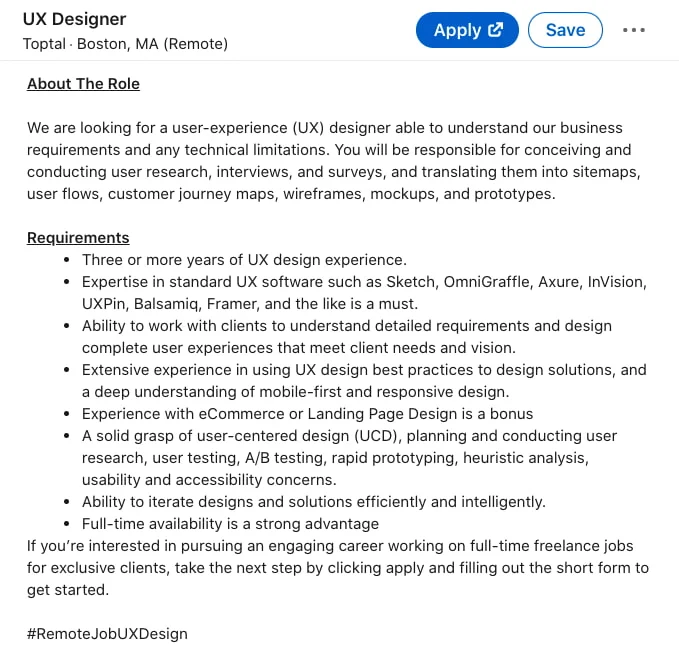
Starting Your Career in UX Design
Because UX designers must grasp not only how programmes function but also how people think, their skills are diverse, ranging from coding to comprehending responsive design to user research and testing, among others. It takes time to develop the necessary skillset, but there are no official qualifications or a singular path to becoming a UX designer. This means that anyone can make a good living doing UX design. Why not you?


